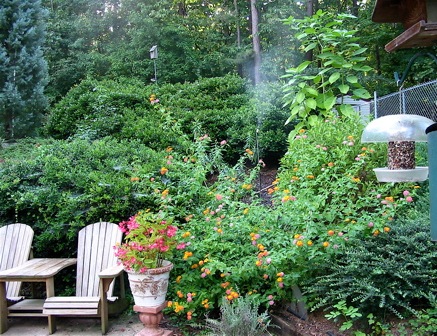Time to Dust Off those hummingbird feeders

Now is the time to get your hummingbird feeders out from storage and give them a good cleaning for the upcoming season. Plain hot water works, even if you send them through the dishwater, be sure to rinse them thoroughly to remove any residue. Along the Gulf of Mexico, Ruby Throats have started to claim territories, with other species following close behind.
Hummingbird season is an exciting one for many backyard birders, as these little sprites tend to provide some mesmerizing entertainment. Many folks could just sit and watch hummingbirds’ shenanigans for hours on end. Aside from the sugar water in hummingbird feeders, moving water is a very big attraction for them. Bathing, drinking and playing in birdbath fountains or bubblers comes naturally for hummers – they’re drawn to it like a magnet.

Treat your hummingbirds to a fun water feature this season and you’ll be rewarded by increased numbers and some fascinating activity and behaviors from the little guys!
Oh yeah… maybe this is the season to try making your own nectar too. It’s really quite simple and only takes a few minutes. Here’s the recipe: one part plain table sugar (cane) to four parts water. That’s it! Never use anything other than pure cane sugar (white table sugar) as it’s harmful to hummingbirds. There’s really no need to boil the water, we boil one cup simply to dissolve the sugar quicker and more effectively. If you do boil the water, be sure it has cooled before filling your hummingbird feeders. Store extra nectar in the fridge for up to two weeks. Now wasn’t that easy?
